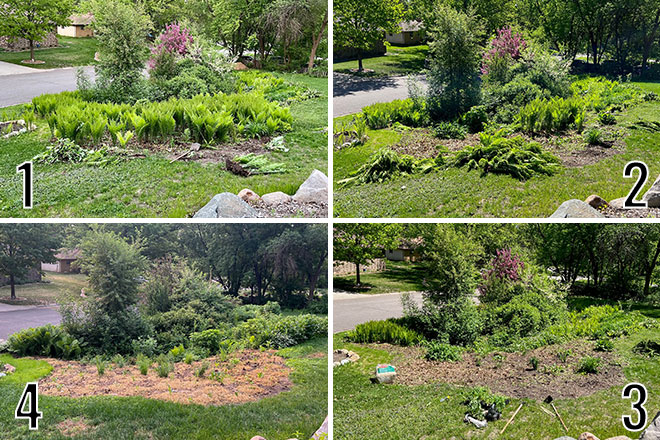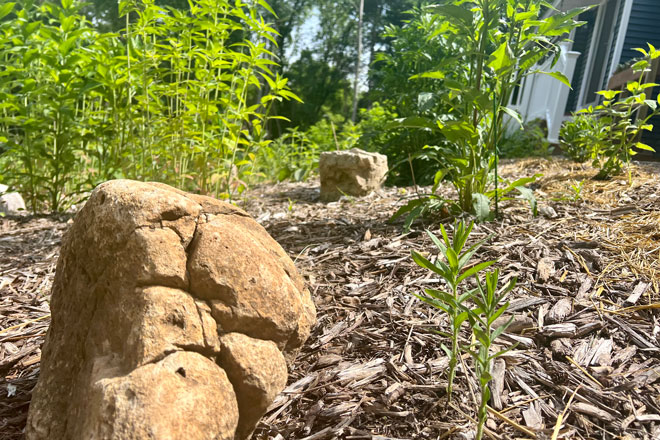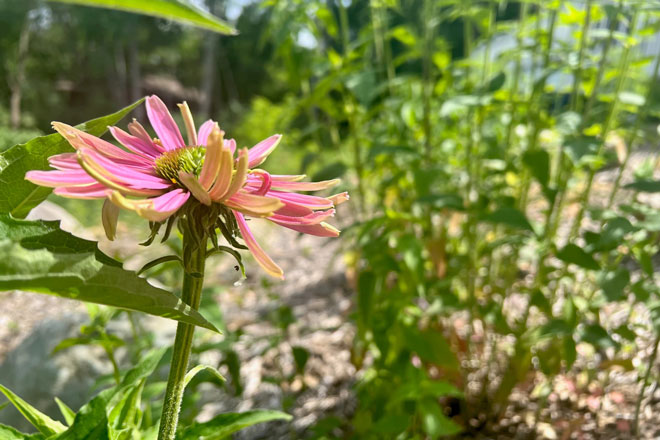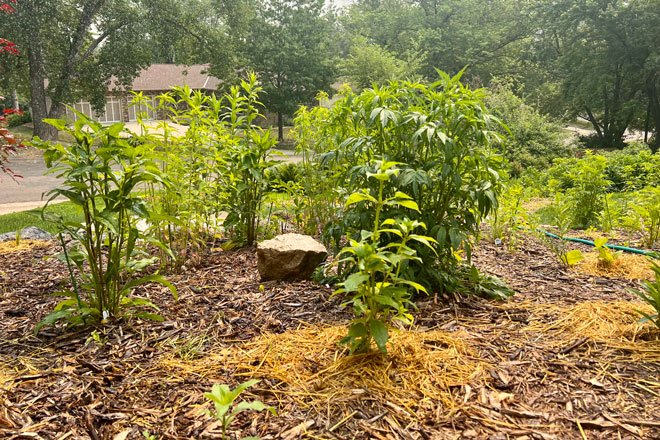Farewell, Fern Gully
Words and Pictures By Tom Carpenter
Check out the 2023 Pollinator Week Habitat Planting Kit
If I am not hunting or fishing, it is gardening that I want to be doing. And if it is gardening I am doing, it is (as with hunting and fishing) with purpose that I want to be doing it.
As of late, that gardening purpose is pollinators. I fancy my pollinator plots as mini prairies. Maybe they are less than that, but maybe they are more.
They are right here in front of me, just out the door, all the time, attracting wildlife in the form of orange-and-black monarchs, yellow swallowtails, iridescent dragonflies and rainbow beetles (just to name a few) to the little oases of habitat.
The newest oasis went in this spring.
Fern Gully used to be just a washout I had stabilized with ferns that, for all intents and purposes, looked good for a few weeks each spring as their new growth burst forth, and then pretty much languished without wildlife value for the rest of summer.
They were green, then half brown by July, and always a desert for wild things.
Gardening for pollinators isn’t rocket science. It’s just a little work. Good work. Work during which I think about hunting and fishing and helping monarchs (my heart thrills to their waft on a summer’s day), friendly thumb-sized bees a-buzz, hummingbird moths, graceful dragonflies and yes, even hummingbirds themselves. Not to mention goldfinches and chickadees swaying on seedpods at the end of summer all the way through winter.
Take a look at the flow of eliminating the ferns, many of which ended up in a more suitable place in the shade, and then putting in pollinator plugs: purple coneflower, yellow coneflower, butterfly milkweed, black-eyed Susan (rudebeckia), monarda (bee balm), blazing stars (liatris), goldenrod, asters and more. Bluestem and Indiangrass anchor the middle.
 It took about 12 hours of work to eliminate hundreds of pounds of ferns, some of which found a new home back in my woods. In the last two photos, plugs are in, mulched with straw and growing.
It took about 12 hours of work to eliminate hundreds of pounds of ferns, some of which found a new home back in my woods. In the last two photos, plugs are in, mulched with straw and growing.
Native wildflowers are tough. Real tough. You can grow them. Easy.
Milkweed takes care of itself, volunteering where it wills itself, and treated like little royalty amongst the planted plants … and maybe most valuable all, at least for monarchs.
Mulched with straw for now to keep competing the weeds at bay and weeded regularly (therapeutic work itself), Fern Gully is now Prairie Swale.
At Prairie Swale’s top is Hillside Prairie, last spring’s project that replaced several hundred square feet of useless-to-wildlife landscape rock. One of my favorite features is limestone rocks plopped here and there. Why not? I love limestone, the rock of my youth and of my soul.
 Small limestone boulders on Hillside Prairie add variety … and weeds don’t grow where boulders sit.
Small limestone boulders on Hillside Prairie add variety … and weeds don’t grow where boulders sit.
When Prairie Swale gets a little bigger yet this summer, I will mulch between the plants with bark to help keep weeds at bay. And plant some limestone there too.
When I walked outside the other morning, magic had happened: The first coneflower was out in Hillside Prairie. The buds on the other plants are getting ready to burst forth with color.
 The season’s pioneer bloom on Hillside Prairie.
The season’s pioneer bloom on Hillside Prairie.
Prairie Swale, even though just planted a month or so ago, will show some blooms yet this summer. But it is next year that it will come into real glory.
And that is what it is all about, is it not? Doing something beyond ourselves, for a time beyond now – one plant, one pollinator patch, one yard, one field, one landscape at a crack.
 This is Hillside Prairie, tall and robust and busting at the seams for summer blooms … and only in its second year.
This is Hillside Prairie, tall and robust and busting at the seams for summer blooms … and only in its second year.
No matter how much room you do or don’t have, pollinators bring the wild to where you live. They do not ask for much.
Say farewell to some languishing patch of ground or yard grass and turn it into something glorious and living. That is the Pheasants Forever and Quail Forever way, at home. And that is what Pollinator Week, June 19-25 this year, is all about.
Visit our Pollinator Week page to get started doing your part, and making yourself as happy as I do out there.
And at the cusp of darkness on summer evenings, the fireflies come out. I haven’t had them in a yard of mine since my youth: beacons of hope there only because I have done something good.
They light the way and promise another day.
Tom Carpenter works as editor at Pheasants Forever with his pollinator patches just a glance away.